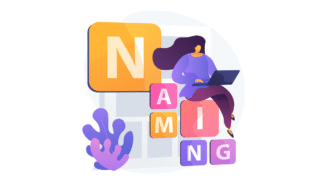LESSON OVERVIEW
The main objectives of this speaking lesson are to:
- talk about uncertain situations from different perspectives;
- revise vocabulary to talk about uncertainty;
- watch a video on VUCA, a model for understanding difficult situations.
C2 / Proficiency45 min
60 minSpeaking ClassUnlimited Plan
This is a Speaking Class worksheet. It includes a variety of tasks that let your students practise their speaking skills. This lesson format does not focus on grammar or vocabulary. Learn more about it here.
With this lesson, students discuss attitudes towards uncertainty, revise useful vocabulary (e.g. resilient, complexity, disruptive, etc.) and debate helpful skills when someone faces uncertain situations (e.g. preparedness, open-mindedness and agile thinking, resilience, etc.). They also watch and discuss a video about a framework to interpret challenging situations, talk about what companies could do in challenging situations and discuss how some difficult situations were handled in real life.
WARM-UP AND VOCABULARY
This speaking lesson starts with a warm-up. Students read and choose the statement that best describes their attitude towards uncertainty (e.g. I thrive on the stress of the unknown.) and provide some examples. You can also do an extra activity where students revise vocabulary to talk about uncertain situations. Students complete gaps with the correct forms of words (e.g. ambiguous, unprecedented, volatile, etc.). Afterwards, they discuss questions about coping with uncertainty and its impact. Then, students think of an example of an uncertain situation. They look at a list of skills (e.g. critical thinking, emotional intelligence, risk-taking, etc.) and choose the one that might be helpful when someone finds themself in this situation. Students also explain their reasoning.
VIDEO AND DISCUSSION
In this part of the lesson, students prepare to watch a video about VUCA, a framework to interpret challenging situations. First, they guess what VUCA might stand for (volatility, uncertainty, complexity and ambiguity) and explain their reasoning. Then, they watch the video and evaluate the relevance of four different strategies for dealing with uncertainty in their industry. Afterwards, students read and talk about uncertain situations the three companies face. First, they discuss the adjectives that best describe the situations. Students also debate how each business could manage risks and opportunities during a crisis. Finally, they think of a specific example of one uncertain situation (e.g. healthcare crisis, global IT outage, extreme weather event in your country, etc.) and discuss how it was handled using some points (e.g. responding immediately vs waiting for more information).
WORKSHEETS
Subscribe to unlock these and many other Standalone lesson lesson plans with the Unlimited plan
Subscribe













The lesson is super! However, there seem to be a problem with accessing the student worksheet. It shows there’s a problem with the database. I hope it gets fixed soon! Great work everyone!
We don’t see this error on our side. It might have been a transient issue but if not, and you still experience that, please contact us via chat or support form, and we will try to help you out: https://eslbrains.com/contact/
I love this ted talk in connection with this topic https://www.ted.com/talks/amy_c_edmondson_how_to_lead_in_a_crisis
Thanks for sharing! We have a lesson on leadership based on this video: When a crisis strikes, a good leader…
you’re right, that’s probably a better fit